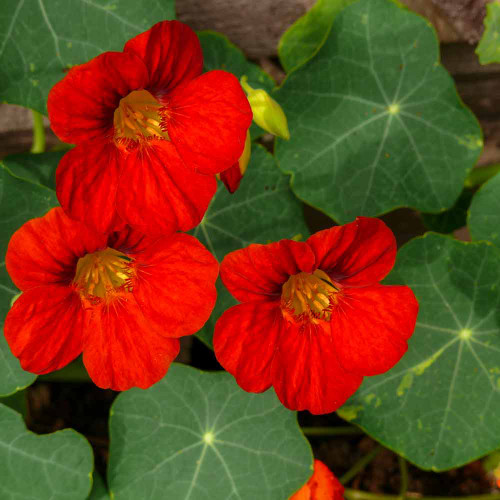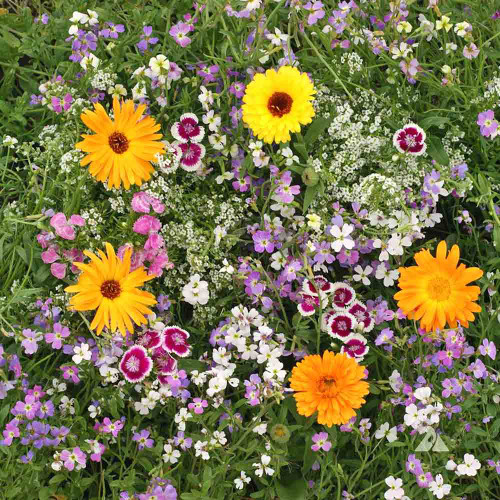Description
Climbing Nasturtium - Tall Seed Mix
Breathe in the sweet-yet-spicy scent of these profuse flowers that bloom in a stunning mix of warm hues. Shades of red, maroon, orange, and cream intermingle in a dazzling display of natural beauty.
You won't have to worry about constantly tending to these flowers, as they require minimal water and absolutely no fertilizer. The Climbing Nasturtium is a fast-growing vine that trails beautifully, making it an excellent choice for hanging baskets. Stand back and watch it thrive, as it fills trellises, fences, and summer arbors with its luscious foliage.
The vibrant flowers and bright green leaves are not only appealing but also have a unique spicy-sweet flavor that's perfect for adding a zing to your salads or garnishing dishes. Additionally, this plant is a fantastic companion for your vegetable garden as it helps to repel pests and attract beneficial insects like bees and butterflies.
Succeeds in all but the coldest areas.
History
Nasturtium (Tropaeolum majus) derives its name from the Latin words nasus and toquere, which translates as "nose twister" - no doubt in reference to is light, peppery smell. Some sources credit the Peruvians for introducing early Spanish explorers to the nasturtium and to its delightful taste. Others maintain that the edible qualities of the blossoms were well known to the ancient Persians four centuries before Christ's birth. The plants were first brought from Peru to Spain. From there, nasturtiums went on to seduce England and all of Europe.
Uses
Considered to be the ultimate edible flower as the leaves, flowers, stems and seeds are all edible with a peppery, softly spicy flavor similar to watercress. Add the flower petals to salads for a bright, spicy note. Makes an unusual and tasty garnish for steaks, especially with a bit of herbed butter or blue cheese. Other uses include decorating cheeses, making nasturtium pesto, adding flavor and color to soups, and stuffed nasturtium flowers. See our recipe for Pickled Nasturtium Pods.
Growing Tip
Nasturtiums also attract aphids, making them an excellent trap crop. If aphids attacked your young fruits trees last year, plant some of the trailing nasturtiums at the base of the tree this year. Portable containers of nasturtiums allow you to move them to affected areas of your garden. Once the plants “trap” the aphids, move the containers to a safe place, hose off the aphids, and place them back in the garden where they are most needed.
Learn More
From the soil to the seed to the food you eat - we'll help you grow your best garden!
1 Review
-
Climbing nasturtiums
These vines were a star of my Wisconsin garden! I planted several at each end of long tomato trellises. The garden plot was nearly entirely composted horse manure, so I had a lot of vegetative growth of all my plants and few flowers early in the season. The nasturtiums also seemed to take their time, but by late summer the vines had sealed the ends of my rows shut with a mass of tall round leaves and cheerful orange blossoms. I could tramp right through them and they'd be back to their glory the next day. I'm looking forward to growing them again next season in much poorer soil to see if I get more flowers and less leaves.





















